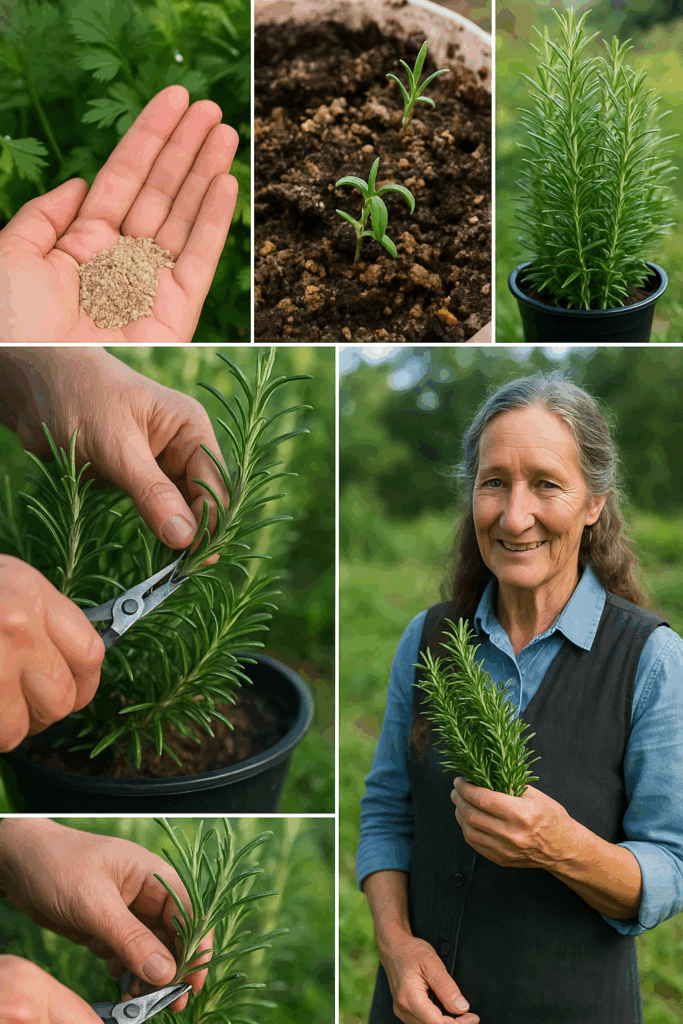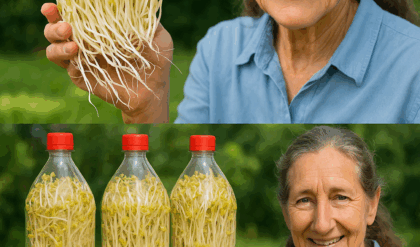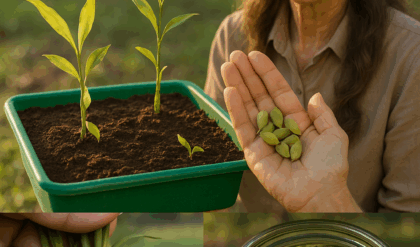What if you could transform your home into a fragrant haven, harvesting fresh rosemary to elevate your dishes and boost your health, all from a simple pot? Rosemary (Rosmarinus officinalis), with its piney aroma and needle-like leaves, is a culinary and medicinal gem that thrives indoors, even for beginners. This hardy herb, native to the Mediterranean, enhances roasts, teas, and wellness routines while offering antioxidant and memory-boosting benefits. Curious about growing rosemary from seed in containers? Dive into this comprehensive guide to discover step-by-step instructions, expert care tips, and the secrets to harvesting your own vibrant sprigs, creating a sustainable source of this versatile spice.

Why Grow Rosemary Indoors?
Rosemary’s aromatic leaves add depth to soups, breads, and meats, while its rosmarinic acid delivers anti-inflammatory and cognitive benefits. Growing indoors ensures year-round access to fresh, organic herbs, saving you from pricey store-bought bunches (up to $3 per ounce). In containers, rosemary stays compact (1-3 feet), fitting perfectly on windowsills or countertops, as praised for its “kitchen garden charm.” Starting from seed is cost-effective—a $5 packet yields multiple plants—and allows you to nurture a long-lived herb (up to 10 years). Here’s how to cultivate rosemary indoors for a flourishing, fragrant harvest.
Understanding Rosemary
Rosemary is a perennial evergreen shrub that loves sunny, warm conditions (65-80°F) and well-draining soil. Its seeds, small and dark, require patience to germinate, but once established, the plant is low-maintenance, drought-tolerant, and pest-resistant. Indoors, it adapts to containers, making it ideal for apartments or cooler climates (USDA Zones 7-10, or colder with protection). Harvested leaves serve as a spice, tea ingredient, or aromatherapy aid, delivering both flavor and wellness.
Materials Needed
🪴 Container: 8-12 inch wide, 10-inch deep pot with drainage holes.
🌱 Potting Mix: Well-draining mix (50% potting soil, 30% sand, 20% perlite).
🌾 Seeds: Fresh Rosmarinus officinalis seeds from a reputable supplier.
💧 Watering Can: Fine-spray nozzle for gentle watering.
☀️ Light Source: 6-8 hours of direct sunlight or grow light (14-16 hours daily).
🌿 Fertilizer: Balanced, water-soluble fertilizer (10-10-10) or organic compost.
🛠️ Tools: Plastic wrap, spray bottle, pruning shears, drainage tray.
Step-by-Step Guide to Growing Rosemary from Seed
🌾 Source Fresh Seeds: Purchase high-quality rosemary seeds from a trusted nursery or online supplier, as viability decreases after 6 months. Soak seeds in warm water for 4-6 hours to enhance germination, a tip noted for “sprouting success.”
🪴 Prepare the Container and Soil: Choose an 8-inch pot with drainage holes, adding a drainage tray to catch excess water. Mix 50% potting soil, 30% sand, and 20% perlite for a slightly acidic to neutral pH (6.0-7.0). Fill the pot, leaving 1 inch at the top, and moisten lightly.
🌱 Plant the Seeds: Scatter seeds thinly on the soil surface, pressing gently without covering, as they need light to germinate. Mist with a spray bottle and cover the pot with plastic wrap to retain humidity. Place in a warm spot (70-80°F) with indirect light.
💧 Germination Process: Keep soil moist but not soggy, misting daily. Germination takes 14-30 days, sometimes up to 6 weeks. Remove plastic once sprouts appear (1-2 inches tall with true leaves), as praised for “seedling vigor.”
☀️ Care for Seedlings: Move the pot to a sunny windowsill with 6-8 hours of direct sunlight or use a grow light (24W, 14-16 hours daily, 6 inches above plants). Water when the top inch of soil is dry, typically every 3-5 days, avoiding overwatering to prevent root rot.
🌿 Transplanting and Growth: At 3-4 inches (2-3 months), transplant the strongest seedlings to individual 10-12 inch pots. Fertilize monthly with diluted 10-10-10 during spring and summer. Prune leggy growth to encourage bushiness, keeping the plant 1-3 feet tall.
🍃 Harvesting Rosemary: After 6-12 months, when plants are 8-12 inches tall, snip 2-3 inch sprigs from the tips, leaving two-thirds of the plant intact. Dry leaves in a shaded, ventilated area for 7-10 days or use fresh. A mature plant yields 1-2 ounces of dried rosemary monthly, noted for “culinary abundance.”
Tips for Success Indoors
🌞 Maximize Light: South-facing windows are ideal; supplement with grow lights in low-light homes to prevent spindly growth, ensuring robust flavor.
💧 Water Sparingly: Rosemary prefers dry conditions; overwatering is the top cause of failure. Check soil moisture with a finger before watering.
🌿 Boost Humidity: Mist leaves weekly or place a pebble tray with water nearby to maintain 40-50% humidity, especially in dry indoor air.
🐞 Pest Control: Watch for spider mites or aphids; treat with neem oil weekly if spotted, maintaining good airflow to prevent fungal issues.
⏳ Be Patient: Seed germination is slow and erratic, but established plants are hardy, rewarding patience with years of harvests.
Precautions for Safe Growing
⚠️ Handle carefully:
- Seed Viability: Use fresh seeds within 6 months, as older ones have low germination rates.
- Overwatering: Ensure excellent drainage to avoid root rot; use pots with holes and a sandy mix.
- Allergies: Pollen or leaf oils may irritate sensitive skin; handle with gloves if needed.
- Toxicity: Rosemary is safe for culinary use but toxic to pets in large amounts; keep pots out of reach.
- Disease: Monitor for powdery mildew; remove affected leaves and improve air circulation.
Amplify Benefits with a Healthy Gardening Routine
🏃♂️ Pair your rosemary project with a nutrient-rich diet to stay energized for gardening. Regular exercise, like a 30-minute walk, boosts stamina for plant care. Drink 8-10 glasses of water daily and get 7-8 hours of sleep to fuel your passion, enhancing the joy of growing your own herbs.
Grow Rosemary Today
Growing rosemary from seed indoors is a delightful journey that rewards patience with fragrant, flavorful sprigs. With fresh seeds, a sunny pot, and minimal care, you can cultivate this Mediterranean herb to enrich your meals and wellness. Ready to savor the fruits of your labor? Sow rosemary seeds today, nurture them with love, and unlock the vibrant, health-boosting power of homegrown spice for a tastier, greener life.
How to Grow Rosemary Indoors in Containers
Materials Needed
- Container: 8-12 inch wide, 10-inch deep pot with drainage holes
- Potting Mix: 50% potting soil, 30% sand, 20% perlite (pH 6.0-7.0)
- Seeds: Fresh Rosmarinus officinalis seeds
- Watering Can: Fine-spray nozzle
- Light Source: 6-8 hours direct sunlight or grow light
- Fertilizer: 10-10-10 water-soluble or compost
- Tools: Plastic wrap, spray bottle, pruning shears, drainage tray
Step-by-Step Guide
- Source Seeds: Buy fresh seeds; soak in warm water for 4-6 hours.
- Prepare Container and Soil: Use an 8-inch pot with drainage tray. Fill with well-draining mix; moisten lightly.
- Plant Seeds: Scatter seeds on soil surface, press gently, and mist. Cover with plastic wrap; keep at 70-80°F.
- Germination: Mist daily; expect sprouts in 14-30 days. Remove plastic when 1-2 inches tall.
- Seedling Care: Provide 6-8 hours sunlight or grow light; water when top inch is dry; mist for 40-50% humidity.
- Transplanting: At 3-4 inches, move to 10-12 inch pots; fertilize monthly. Prune for bushiness.
- Harvesting: After 6-12 months, snip 2-3 inch sprigs; dry or use fresh.
Tips for Success
- Use south-facing windows or grow lights for ample light.
- Water sparingly to avoid root rot.
- Mist weekly for humidity.
- Treat pests with neem oil; ensure airflow.
- Be patient with slow germination.
Precautions
- Use fresh seeds within 6 months.
- Ensure drainage to prevent rot.
- Handle with gloves if sensitive to oils.
- Keep away from pets due to mild toxicity.
- Remove mildew-affected leaves promptly.





